Abstract
We explored the potential of biological control of alfalfa (Medicago sativa L.) seedling damping-off caused by Phytophthora megasperma f. sp. medicaginis by screening root-associated bacteria for disease suppression activity in a laboratory bioassay. A total of 700 bacterial strains were isolated from the roots of field-grown alfalfa plants by using Trypticase soy agar. A simple, rapid assay was developed to screen the bacteria for the ability to reduce the mortality of Iroquois alfalfa seedlings that were inoculated with P. megasperma f. sp. medicaginis zoospores. Two-day-old seedlings were planted in culture tubes containing moist vermiculite, and each tube was inoculated with a different bacterial culture. Sufficient P. megasperma f. sp. medicaginis zoospores were added to each tube to result in 100% mortality of control seedlings. Of the 700 bacterial isolates tested, only 1, which was identified as Bacillus cereus and designated UW85, reduced seedling mortality to 0% in the initial screen and in two secondary screens. Both fully sporulated cultures containing predominantly released spores and sterile filtrates of these cultures of UW85 were effective in protecting seedlings from damping-off; filtrates of cultures containing predominantly vegetative cells or endospores inside the parent cell had low biocontrol activity. Cultures grown in two semidefined media had significantly greater biocontrol activities than cultures grown in the complex tryptic soy medium. In a small-scale trial in a field infested with P. megasperma f. sp. medicaginis, coating seeds with UW85 significantly increased the emergence of alfalfa. The results suggest that UW85 may have potential as a biocontrol agent for alfalfa damping-off, thus providing an alternative to current disease control strategies.
Full text
PDF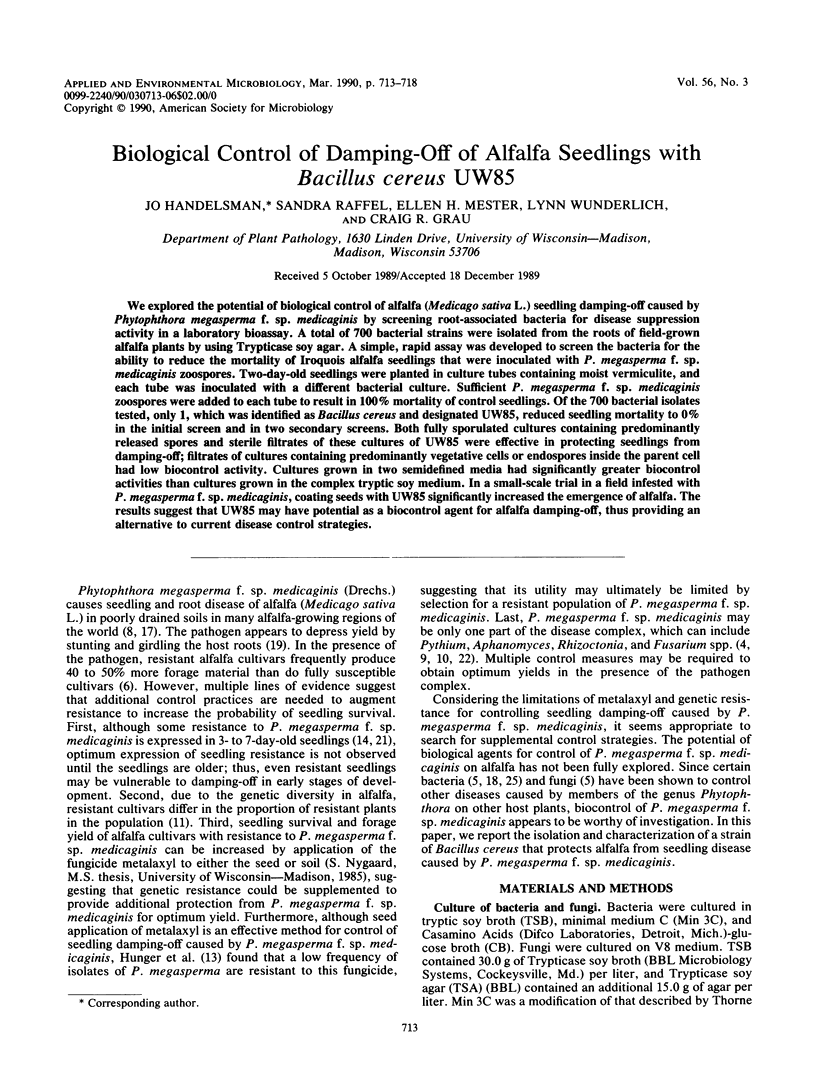
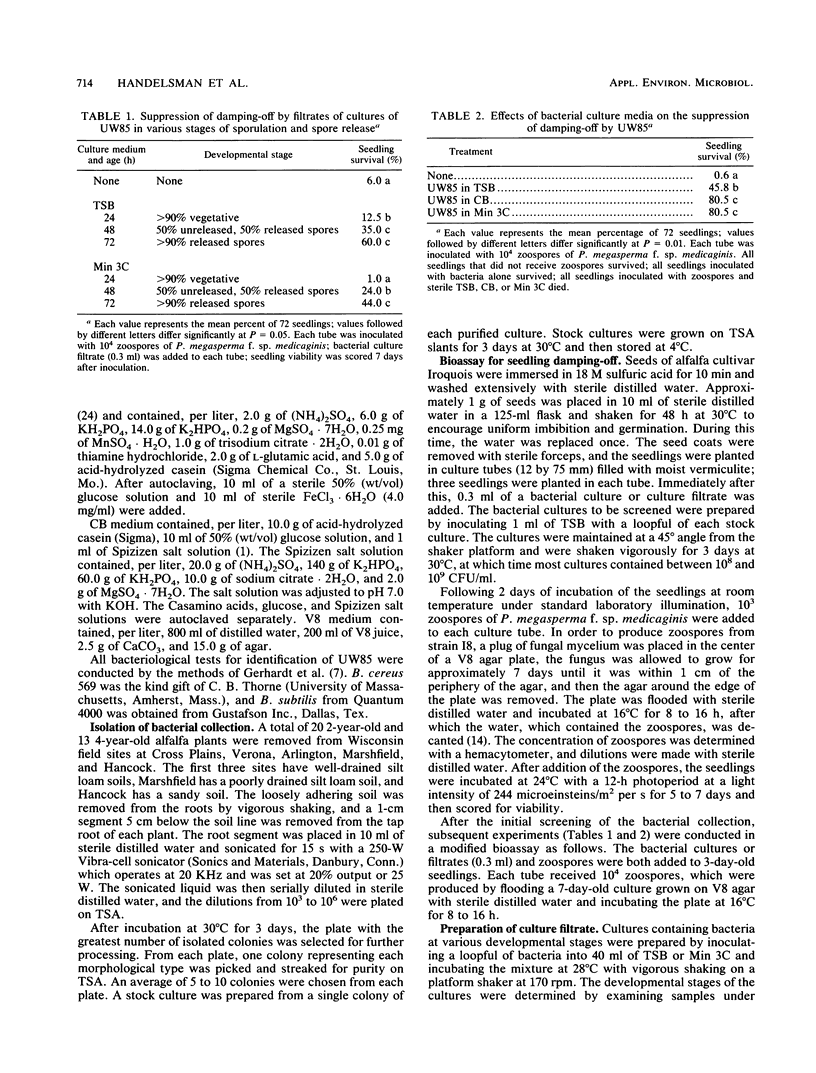
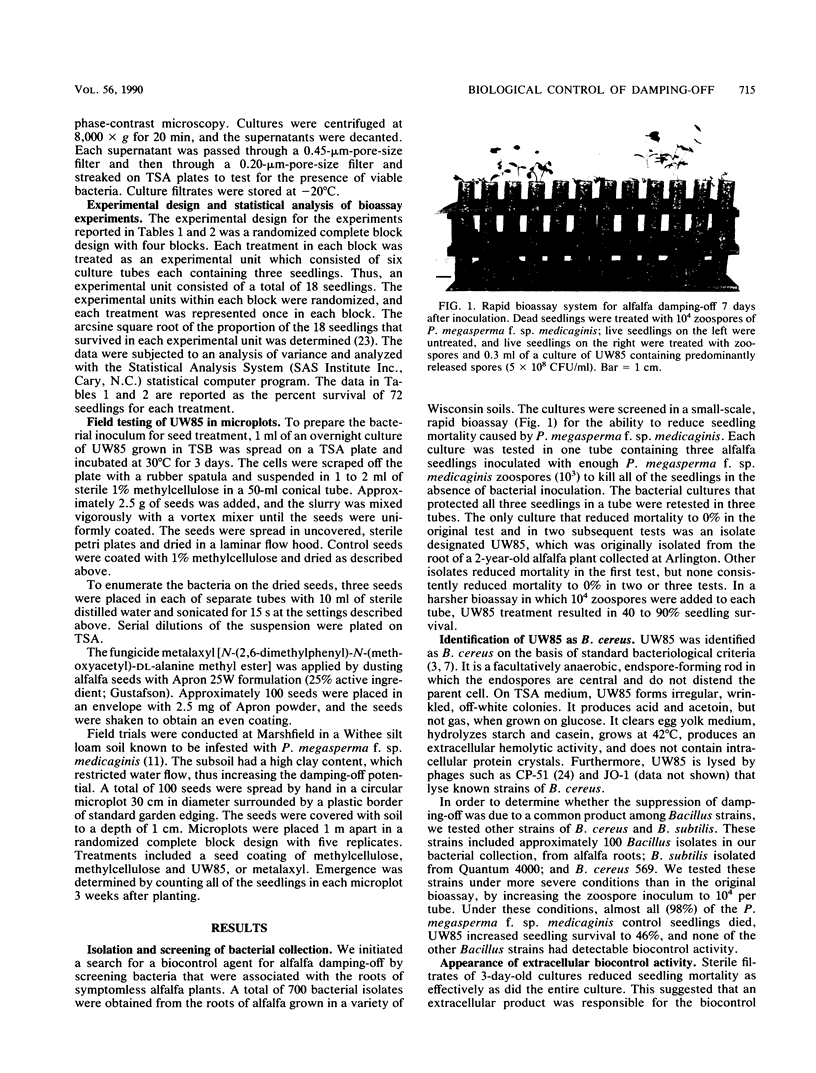
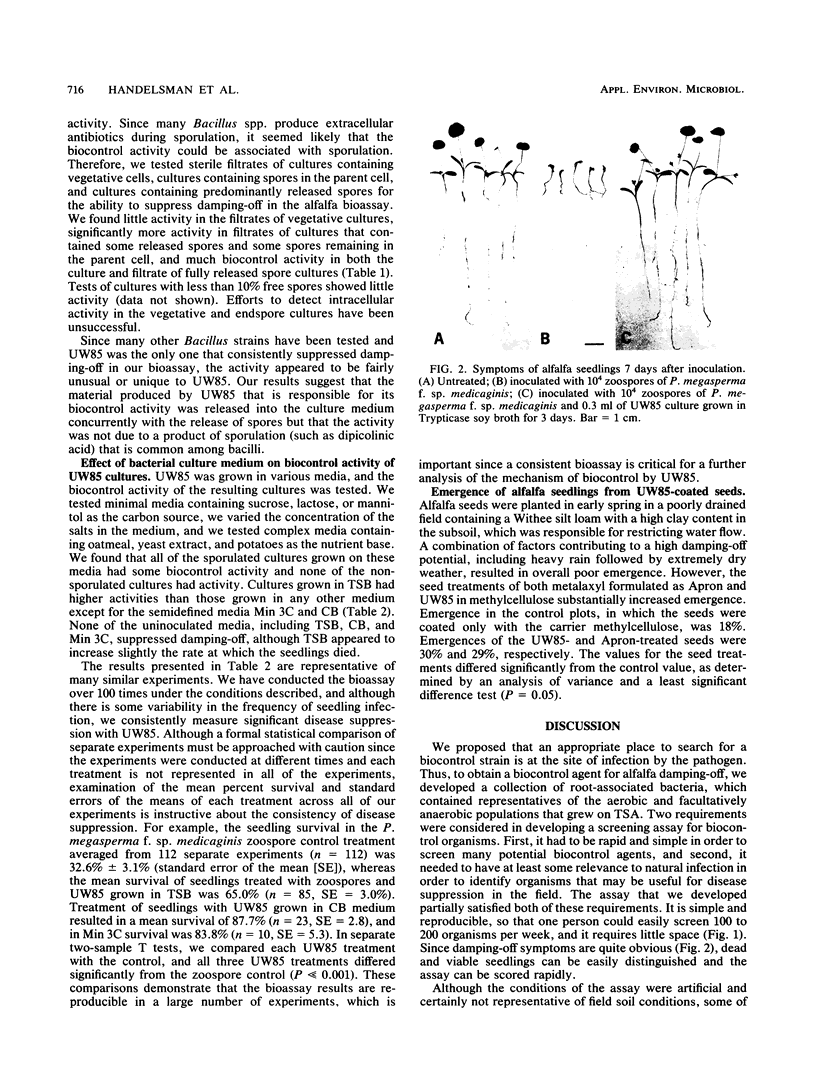
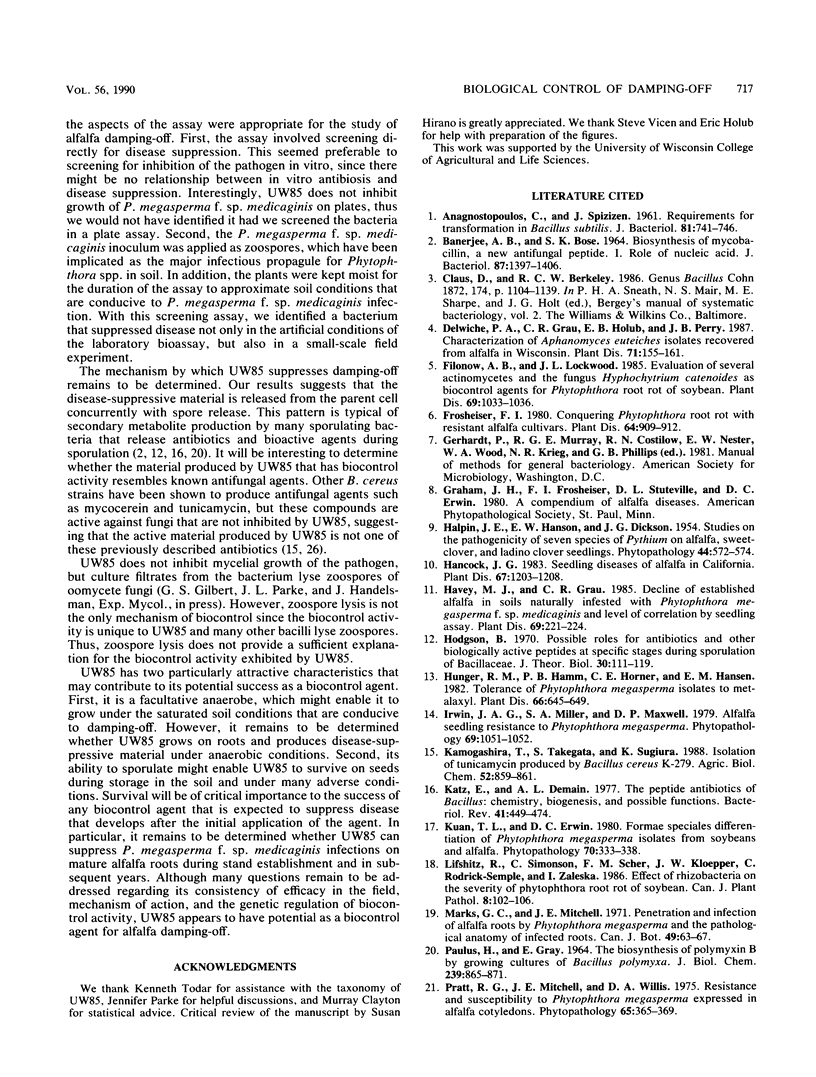
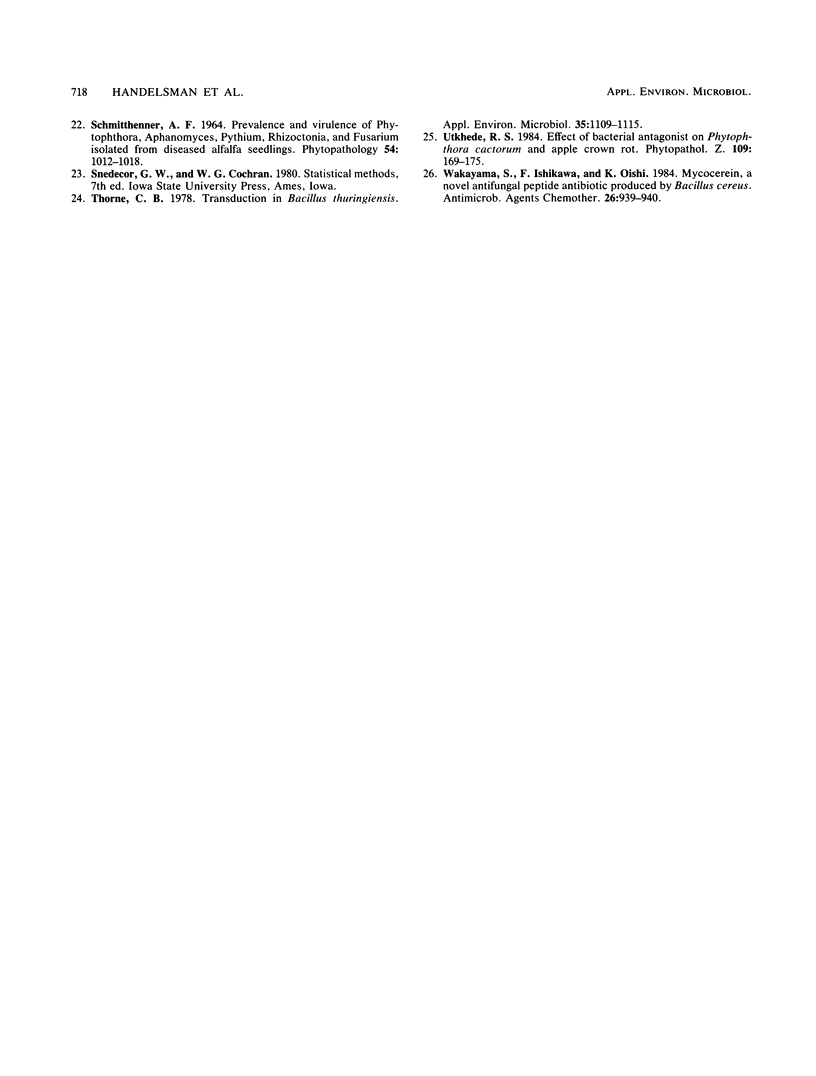
Images in this article
Selected References
These references are in PubMed. This may not be the complete list of references from this article.
- Anagnostopoulos C., Spizizen J. REQUIREMENTS FOR TRANSFORMATION IN BACILLUS SUBTILIS. J Bacteriol. 1961 May;81(5):741–746. doi: 10.1128/jb.81.5.741-746.1961. [DOI] [PMC free article] [PubMed] [Google Scholar]
- BANERJEE A. B., BOSE S. K. BIOSYNTHESIS OF MYCOBACILLIN, A NEW ANTIFUNGAL PEPTIDE. I. ROLE OF NUCLEIC ACID. J Bacteriol. 1964 Jun;87:1397–1401. doi: 10.1128/jb.87.6.1397-1401.1964. [DOI] [PMC free article] [PubMed] [Google Scholar]
- Hodgson B. Possible roles for antibiotics and other biologically active peptides at specific stages during sporulation of Bacillaceae. J Theor Biol. 1971 Jan;30(1):111–119. doi: 10.1016/0022-5193(71)90040-3. [DOI] [PubMed] [Google Scholar]
- Katz E., Demain A. L. The peptide antibiotics of Bacillus: chemistry, biogenesis, and possible functions. Bacteriol Rev. 1977 Jun;41(2):449–474. doi: 10.1128/br.41.2.449-474.1977. [DOI] [PMC free article] [PubMed] [Google Scholar]
- McCaffrey R. J., Sleckler R. A., Gansler D. A., Roman L. O., Holub R. F. An experimental evaluation of the efficacy of suloctidil in the treatment of primary degenerative dementia. Arch Clin Neuropsychol. 1987;2(2):155–161. [PubMed] [Google Scholar]
- PAULUS H., GRAY E. THE BIOSYNTHESIS OF POLYMYXIN B BY GROWING CULTURES OF BACILLUS POLYMYXA. J Biol Chem. 1964 Mar;239:865–871. [PubMed] [Google Scholar]
- Thorne C. B. Transduction in Bacillus thuringiensis. Appl Environ Microbiol. 1978 Jun;35(6):1109–1115. doi: 10.1128/aem.35.6.1109-1115.1978. [DOI] [PMC free article] [PubMed] [Google Scholar]
- Wakayama S., Ishikawa F., Oishi K. Mycocerein, a novel antifungal peptide antibiotic produced by Bacillus cereus. Antimicrob Agents Chemother. 1984 Dec;26(6):939–940. doi: 10.1128/aac.26.6.939. [DOI] [PMC free article] [PubMed] [Google Scholar]




